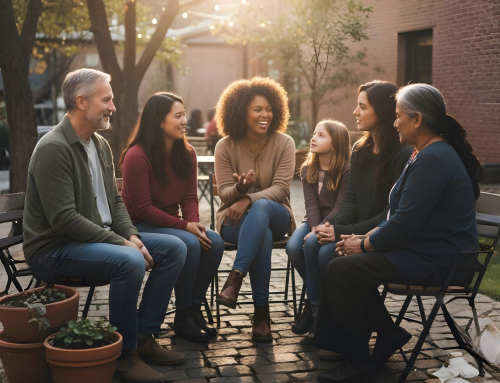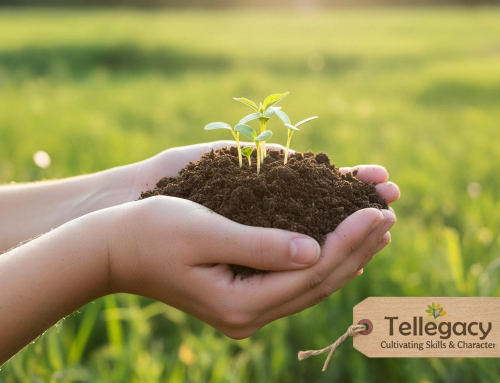We live in a time when society is loudly confronting its biases and rightly so. Conversations about race, gender, and identity have reshaped how we understand fairness and equality.
But amid this necessary reckoning, one form of prejudice keeps slipping through the cracks: ageism, the silent, socially accepted bias that touches every human life.
Unlike racism or sexism, which target specific groups, ageism is universal. It affects you whether you’re 18 or 80. It’s prejudice on a timer.
And yet, it rarely makes headlines.
- Ageism Devalues the Young
We often think of ageism as something that harms older adults, but it begins with how we treat the young.
Young people are too often dismissed as entitled, naive, or inexperienced, as though innovation, empathy, and wisdom belong only to the aged.
This mindset suffocates creativity and prevents fresh ideas from taking root, such ideas that could solve the very crises the older generations fear most.
When youth is undervalued, progress itself becomes impossible.
- Ageism Devalues the Elderly
The flip side is equally cruel. In a culture obsessed with “new,” we quietly discard our elders — and with them, centuries of collective wisdom.
From workplaces that favor “youth culture” to media that erases older faces, the message is clear: if you are not young, you are no longer valuable.
This isn’t just offensive, it’s economically and spiritually devastating. Societies that disconnect from their elders lose their memory, their identity, and their soul.
- Ageism Targets All Races
Racism divides people by color. Ageism infects them all.
It doesn’t discriminate by skin tone — it exists inside every community, perpetuating the illusion that youth equals relevance and age equals decline.
This universality makes it more dangerous. It quietly erodes solidarity across movements for justice because it operates from within every demographic.
In that sense, ageism doesn’t just coexist with racism — it feeds it, by making us forget that all oppression is interconnected.
- Ageism Erodes Economic Value
Age bias is an invisible tax on our collective potential.
In workplaces, older employees are often pushed out just when their strategic wisdom is most valuable, while younger ones are underpaid and overworked under the label of “hustle culture.”
Both are symptoms of the same disease: a belief that human worth is tied to a specific age window.
The result? Lost productivity, massive retraining costs, and the erosion of intergenerational collaboration the very foundation of innovation.
- Ageism Destroys Social Connection
When society separates generations, it kills empathy.
Older adults become isolated. Younger people lose mentors. Families fragment. Neighborhoods turn silent.
We forget that wisdom and curiosity were never meant to live apart; they were designed to inform each other.
Without cross-generational connection, communities lose their humanity and depth.
- Ageism Includes Every Gender and Compounds Bias
Ageism doesn’t replace other forms of prejudice; it amplifies them.
Women are shamed for aging. Men are pressured to stay “relevant.”
Non-binary and transgender individuals are marginalized in both directions — too young to be taken seriously, too old to fit the narrative.
It’s the only bias that crosscuts every gender, multiplying inequality at every stage of life.
- Ageism Leads to a Loss of Perspective
The disappearance of intergenerational dialogue means we stop learning from history.
We lose perspective — the long view that keeps humanity balanced.
When every new generation believes it’s inventing morality from scratch, we repeat the same mistakes.
Without the wisdom of the aged and the imagination of the young, progress becomes repetition in disguise.
- Ageism Erodes True Diversity and Identity
We often celebrate diversity in terms of race, gender, and culture — but ignore age diversity, which is equally vital.
A society without age diversity becomes emotionally and intellectually shallow.
It’s not enough to include different faces if they all come from the same age bracket. True inclusion means valuing the 20-year-old dreamer (or passionate historian) and the 80-year-old historian (or passionate dreamer) in the same conversation.
Without that, we lose our identity as a collective societies.
- Ageism Fuels Delusion and Distraction
Ageism creates the illusion that only the young have power — or that the old are the problem.
Both narratives are false and destructive.
When society fixates on youth, it becomes obsessed with surface over substance.
It stops noticing deeper dangers: the erosion of truth, empathy, and civic responsibility.
This distraction keeps us fighting each other instead of fixing the systems that harm us all.
- Ageism Threatens the Future of Humanity
Ageism is not just prejudice it’s a loss of alignment.
When we ignore entire generations, we lose our collective intelligence.
When we silence wisdom, we weaken foresight.
And when we devalue youth, we destroy the hope of renewal.
Ending ageism is not an act of charity. It’s an act of societies survival.
A New Lens of Equality
We’ve learned to see racism as a poison that divides humanity. Ageism is the toxin that dissolves the bridge between all humanity.
Because when generations turn away from each other, no one is left to remember — or imagine — who we truly are.
The Larger Conversation
This essay is only the beginning.
To end ageism, we must first understand its anatomy — its roots in culture, economics, psychology, and media.
That’s the deeper journey: one that deserves not just an article, but an entire book exploring how generations can reconnect and rebuild a world that values every stage of life.






